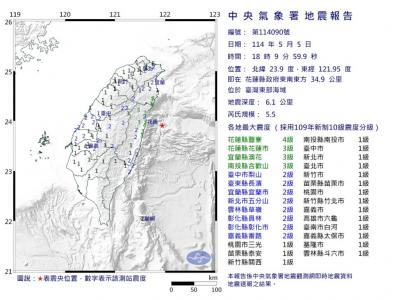Files on political cases relating to the 228 Massacre and the White Terror era must be made readily available if Taiwan is to succeed in transitional justice, a legislator has urged after the National Archives earlier this month announced that the victims, their spouses and immediate family members can now ask for copies of all files and data of the victims’ cases.
Democratic Progressive Party (DPP) Legislator Yu Mei-nu (尤美女) said making the files available was a key component of transitional justice.
The victims and their families had suffered violations to their rights to personal freedom and had their reputations and families destroyed by the national apparatus, and the wishes of the victims or their family members to understand why they had been politically oppressed should be respected by the government, Yu said, adding that the government had the obligation to provide the required data.
It is unbecoming for the government to wait until it receives such requests before processing them, but it is absurd that it is charging the victims or their families for reprinting the files, Yu said.
Pointing to the experience of someone involved with the Committee on Affairs to Arm Taiwan case, Yu said the individual had been charged NT$10,000 for all the reprinted material, adding that the Chen Wen-chen Foundation had also been asked to pay NT$1,180 for 585 pages of information on the death of Chen Wen-chen (陳文成).
Former DPP legislator Shih Ming-te (施明德) also had to spend a lot of money applying for print-outs on cases that he had been involved in, Yu said.
The Committee on Affairs to Arm Taiwan case referred to the arrest of 63 people in Taichung on allegations of collaborating with Chinese communists.
Chen — a Taiwanese academic who had studied and worked in the US as an assistant professor in the department of statistics at Carnegie Mellon University in Pittsburgh, Pennsylvania, and a sympathizer of Taiwan’s democracy movements — was found dead on the lawn of National Taiwan University on July 2, 1981, after being detained by the Taiwan Garrison Command just one day after returning to Taiwan to visit his family.
The KMT government said at the time that Chen had committed suicide. However, an autopsy performed by a US forensics expert disputed this conclusion. The cause of Chen’s death remains unknown to this day.
Shih — one of the founding members of the DPP and the only one in the party to have been present in both the White terror and the Formosa Magazine incident — was an integral member of the party’s many struggles up until the first political party transition in 2000.
He had been imprisoned for 25 years during the White Terror era, which had at his release in 1977 almost outnumbered the number of days he had been free.
Yu had proposed the amendment last year during a session of the legislature’s Judiciary and Organic Laws and Statutes Committee and was adopted by the committee.
The National Archives declared the amended fee standards on material reprinting on Feb. 8, stating clearly that victims of the 228 Massacre or the White Terror era accused of Offenses Against the Internal Security of the State, Offenses Against the External Security of the State, or violation of the now-rescinded Act for the Punishment of Rebellion (懲治叛亂條例) and the now-rescinded Act for Litigation against Communist Spies During the Period of Mobilization for the Suppression of Communist Rebellion (戡亂時期檢肅匪諜條例), may enjoy a one-time free reprint of any single document pertaining to cases in which they were involved once proper proof is given.
The data will be made available either in hard copy, or a device on which the data is stored digitally, the archives said, adding that the applicant may only choose one of the two methods.

An essay competition jointly organized by a local writing society and a publisher affiliated with the Chinese Communist Party (CCP) might have contravened the Act Governing Relations Between the People of the Taiwan Area and the Mainland Area (臺灣地區與大陸地區人民關係條例), the Mainland Affairs Council (MAC) said on Thursday. “In this case, the partner organization is clearly an agency under the CCP’s Fujian Provincial Committee,” MAC Deputy Minister and spokesperson Liang Wen-chieh (梁文傑) said at a news briefing in Taipei. “It also involves bringing Taiwanese students to China with all-expenses-paid arrangements to attend award ceremonies and camps,” Liang said. Those two “characteristics” are typically sufficient

A magnitude 5.9 earthquake that struck about 33km off the coast of Hualien City was the "main shock" in a series of quakes in the area, with aftershocks expected over the next three days, the Central Weather Administration (CWA) said yesterday. Prior to the magnitude 5.9 quake shaking most of Taiwan at 6:53pm yesterday, six other earthquakes stronger than a magnitude of 4, starting with a magnitude 5.5 quake at 6:09pm, occurred in the area. CWA Seismological Center Director Wu Chien-fu (吳健富) confirmed that the quakes were all part of the same series and that the magnitude 5.5 temblor was

The brilliant blue waters, thick foliage and bucolic atmosphere on this seemingly idyllic archipelago deep in the Pacific Ocean belie the key role it now plays in a titanic geopolitical struggle. Palau is again on the front line as China, and the US and its allies prepare their forces in an intensifying contest for control over the Asia-Pacific region. The democratic nation of just 17,000 people hosts US-controlled airstrips and soon-to-be-completed radar installations that the US military describes as “critical” to monitoring vast swathes of water and airspace. It is also a key piece of the second island chain, a string of

The Central Weather Administration has issued a heat alert for southeastern Taiwan, warning of temperatures as high as 36°C today, while alerting some coastal areas of strong winds later in the day. Kaohsiung’s Neimen District (內門) and Pingtung County’s Neipu Township (內埔) are under an orange heat alert, which warns of temperatures as high as 36°C for three consecutive days, the CWA said, citing southwest winds. The heat would also extend to Tainan’s Nansi (楠西) and Yujing (玉井) districts, as well as Pingtung’s Gaoshu (高樹), Yanpu (鹽埔) and Majia (瑪家) townships, it said, forecasting highs of up to 36°C in those areas